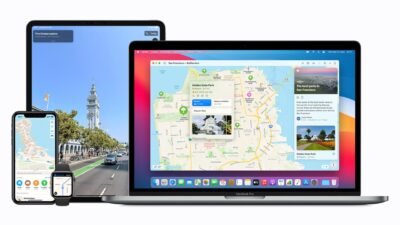Google’s Radar Soli Motion Sense Gesture Control To Return In Other Products

With the new Pixel 5 smartphone, Google has dispensed with the gimmicks of the predecessor and threw both face recognition and gesture control overboard for the current generation. But that doesn’t mean that the new technology has now been buried, because Google’s hardware boss has announced that we will see the radar technology Soli in other products in the future.
The next generation of Google hardware is here and although it has a lot of new features in its luggage, it also does without some older features. The most interesting omission is certainly the dominant sensor bar above the Pixel 4 smartphone, which allows it some additional functions, but has not necessarily influenced the design to the advantage. I think it is very likely that many users will not miss the functions that have now been removed, as per reports.
The Pixel 4 was the toy among smartphones because, in addition to the standard functions, there was the Motion Sense gesture control, which was implemented via the Soli radar chip, which Google researched and tinkered with for no less than five years. The result, however, is a less than impressive implementation of gesture control, which can only recognize large-area movements and is not able to recognize individual fingers or several complex movements. That looked different in the demonstrations.
The real strength of Soli was actually that the presence of the user in front of the camera could be recognized even faster and the front camera could be activated accordingly. This made it possible for facial recognition to react so quickly that it could outshine any other smartphone – including the iPhone. But of course, you will not use the chip for that alone, mainly because it should not be cheap.
For the time being, Google did without the chip on the Pixel 5, but it will celebrate a comeback. Hardware boss Rick Osterloh promised in an interview with The Verge that the radar control will be installed again in future products. It has to be said that he clearly wasn’t talking about smartphones, but only about products in general.
It is already known that the Soli gesture control can be found in a prototype of an upcoming Nest thermostat. This discovery led to rumors and suspicions a little later that Motion Sense could also have been found in the new Smart Speaker Nest Audio, but this was not the case. It is still possible that the chip is installed and not activated, but the probability is very low.
In my opinion, the smartphone was the worst product one could ever choose for solos. It makes sense in devices without a display, as well as in devices that you don’t necessarily have to touch. From the smartwatch to the smart speaker to numerous smart home devices, a lot would have made sense. But of all things in the smartphone, which you hold in your hand anyway and only have to lower your finger ten centimeters to operate the display, it made little sense. We can look forward to seeing the products in which Google will integrate radar control in the future. Once you can sell it en masse, costs will come down too. And then you can bring it back to your smartphone as a goodie.
Digital marketing enthusiast and industry professional in Digital technologies, Technology News, Mobile phones, software, gadgets with vast experience in the tech industry, I have a keen interest in technology, News breaking.












